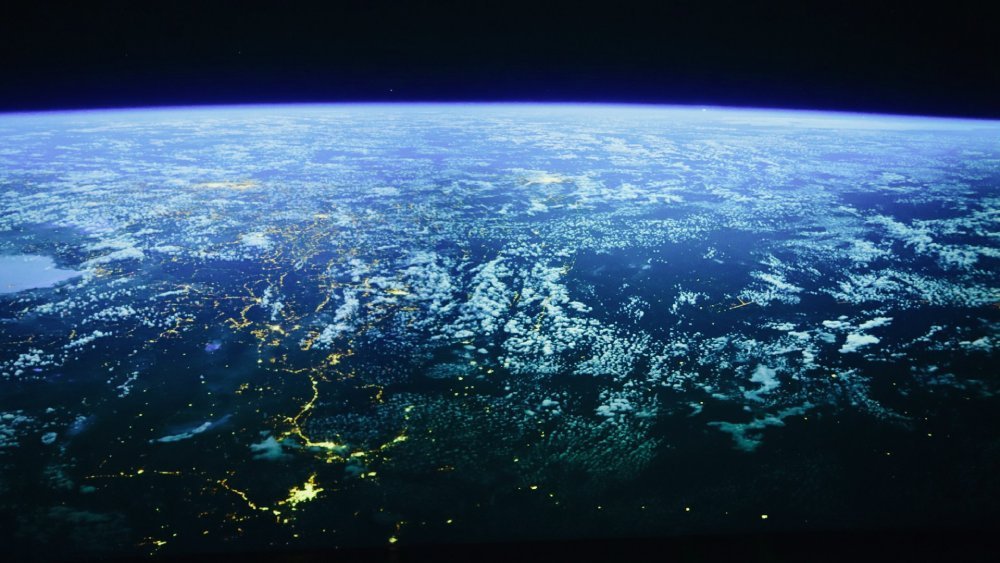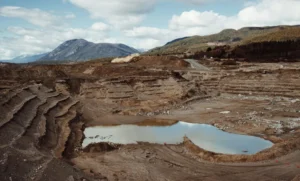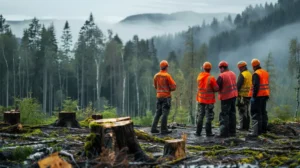Isn’t it amazing how our planet, Earth, hangs there in the huge cosmos? It’s packed with all sorts of life and stunning beauty that grabs you. You’ve got landscapes from the snowy Himalayas to the lush Amazon rainforests – each one like a total work of art by nature.
Earth’s natural systems are like this intricate puzzle that keeps everything in check and supports all life forms. And when we plunge into the ocean’s mysterious depths, secrets await those brave enough to explore.
Earth is like a wonderland, with ecosystems that will blow your mind and spark scientific curiosity! Ready to dive into Earth’s hidden gems? Check out this blog post with ten facts. We’ll dig into what we know and uncover some truly surprising stuff. That will help you see our environment in a whole new light!
1. The Earth is a Dynamic System - A Living Organism
Have you ever thought about how the Earth is like a living, breathing organism? It’s been around for about 4.5 billion years and constantly changes. Seeing all the intricate systems and cycles at work is cool.
Earth is the ultimate protector in space! It’s got its immune system, fending off cosmic dangers like asteroids with such strength. Isn’t that mind-blowing?
Oh, and here’s an amazing fact – Earth is like our guardian on a small scale, too. It’s out there, shielding us from any pesky bacteria or viruses that try to sneak in from space. How awesome is that? Does it make you see our planet as this vibrant, living being?
2. The Earth's Magnetic Field: Our North Star
The Earth’s magnetic field is amazing. It’s not just there for our compasses; it helps birds and other animals travel worldwide. This invisible force comes all the way from deep within the Earth, stretching out into space to shield us from solar winds and cosmic rays.
Just picture Earth as this gigantic magnet, with north and south poles not just for directions but as a shield from solar radiation. This magnetic field has shifted and flipped over time, showing how our planet is always up to something. It’s kind of like our personal North Star, guiding us and reminding us of all the intricate systems that keep life going on our awesome planet.
3. The Earth's Atmosphere Extends Far Beyond Our Planet
The Earth’s atmosphere isn’t just what we breathe; it goes way beyond our planet! The outermost layer, the exosphere, reaches up to 10,000 km into space. That’s where particles mingle with solar winds and have the chance to break free from Earth’s gravity.
Did you know Earth’s got more than just its surface? It’s got five layers working together, shielding us from the tough stuff and giving us what we need to thrive. Without this cool setup, life as we know it wouldn’t exist. So, when you gaze up at the sky, think about how the atmosphere’s not just a blue blanket – it’s a crucial part of our home.
4. Earth is Home to Over 8 Million Known Species
Earth is so full of life! Scientists say over 8 million species are hanging out on our planet right now. From tiny bacteria to giant giraffes, we’ve got this amazing mix of life forms, making Earth their place to be.
But you know what’s mind-blowing? Scientists think we’ve only found about 15% of all the species on Earth so far. That’s like millions of plants and animals out there still waiting to be discovered and checked out! Imagine the awesome secrets they’re keeping!
5. Ocean Currents: Nature's Heat Transport System
Ocean currents are Nature’s way of shuffling heat around – it’s pretty awesome how they do their thing! These underwater “rivers” are driven by the wind, Earth’s spin, and differences in water density. So, they move warm water from the equator up to the poles and bring back the cooler stuff. It’s like this massive heat conveyor belt that regulates temps globally and feeds deep-sea creatures with nutrients and oxygen.
Let’s talk about the Gulf Stream – it’s a big player in keeping Europe toastier than expected for its place on the map. Imagine if these currents weren’t here. Our whole climate scene would be a wild ride. It’s amazing how much the ocean shapes our world.
6. The Antarctic – A Continent of Extremes
Antarctica is seriously extreme! I mean, we’re talking temperatures that can hit -129 degrees Fahrenheit! Crazy, right? But guess what? Life still thrives there! From teeny algae to adorable penguins and seals, you’ve got a whole bunch of species chillin’ (literally) in this icy place. And those ice formations? They are so unique you won’t find them anywhere else.
With climate change heating things and melting the Antarctic ice fast, we must step up and protect this cool ecosystem before it’s too late!
7. The Great Barrier Reef: Nature's Spectacle Visible from Space
The Great Barrier Reef is home to 1,500 fish species and unique corals. It’s huge! Astronauts can spot it from space. It spans 133,000 square miles, includes 900 islands and over 2,900 reefs, stretching 1,400 miles along Australia’s coast, and is longer than the Great Wall of China.
Life is like a kaleidoscope in there. Coral and algae share nutrients and energy in this cool partnership. They’re up against stuff like warming seas and pollution. We must step up our conservation game to keep those coral species and our ecosystem safe.
Next time you come across a photo of our planet from space, take a good look – you might catch a glimpse of this magic right there!
8. The Lungs of Our Planet – Vital Amazonian Secrets
The Amazon rainforest, wow, it is like the Earth’s crown jewel, you know? They call it the “Lungs of our Planet,” pumping out 20% of the world’s oxygen! And guess what? It’s packed with all kinds of critters and plants that hold some pretty cool secrets.
Some plants have potent chemicals that fight sickness and heal wounds. People all over the world use these plants for traditional medicine. Isn’t that wild? Millions depend on the Amazon for food and jobs. And let’s not forget, it’s a major source of freshwater!
9. The Power of Photosynthesis: Nature's Energy Source
Isn’t photosynthesis just amazing? I mean, it’s like the life engine! Plants, algae, and some bacteria soak up sunlight, water, carbon dioxide, and poof! They throw in some oxygen as a bonus. It’s the whole reason we can breathe and eat!
Isn’t it cool to realize that every breath and every bite we take is thanks to photosynthesis? It’s what shapes our atmosphere and climates, and scientists are even trying to copy it for clean energy. This process shows how everything on Earth is linked and relies on each other to survive. Nature is just incredible!
10. Ocean Bioluminescence: The Magical Glow of the Sea
Dive into their depths, and you’ll find a world of mysteries and marvels. From glow-in-the-dark creatures in the midnight zone to vibrant coral reefs bustling with life.
The ocean isn’t just blue; it glows too! Yup, you heard it right! Bioluminescence turns the sea into a magical light spectacle. It’s all thanks to tiny glowy organisms known as phytoplankton. When they’re stirred up, they light up the waters.
But wait, there’s more! This dazzling display isn’t just for show; it plays a vital role in the ocean’s ecosystem. The light can draw prey to bigger marine animals and keep predators at bay. So, next time you’re at the seaside at night, take a moment to soak in this enchanting natural wonder.
11. The Global Tree Network — Mycorrhizae
Did you know trees are actually connected through this massive underground network? It’s like their own version of the internet – the Wood Wide Web! All thanks to these tiny fungi called mycorrhizae that team up with tree roots. They help trees get nutrients and water while getting some sweet sugars from photosynthesis.
These fungi don’t just stick to one tree species – they connect different ones! It’s like they’re fostering a community where trees share resources and chat with each other. Nature’s support system is in action, right? So, the next time you’re strolling through the woods, remember there’s a whole hidden world beneath your feet, all thanks to these amazing mycorrhizae!
12. The Great Pacific Garbage Patch: A Monstrous Wake-up Call
We all understand the importance of keeping our planet clean. But have you heard about the Great Pacific Garbage Patch? It’s this huge floating island of trash twice the size of Texas! And get this, it’s not just one pile – a bunch of them scattered around in the ocean.
These garbage patches are big collections of plastic junk and other waste carried by ocean currents and end up in one place. It’s sad to see and makes you think about how our consumption and waste habits mess with our oceans.
The worst part is how it messes with marine life – animals gobble up the trash thinking it’s food or get tangled. And guess what? Since plastic takes forever to break down, we’re looking at hundreds of years of harm to our environment. We must not delay in taking responsible actions for the aquatic environment.
As we discover more about how the environment impacts us, it’s getting clearer that our mental health is closely tied in. The condition of our surroundings can really affect how we feel.
For instance, spending time in green spaces and natural settings has been shown to lower stress and boost mood. On the flip side, pollution and harm to the environment can stir up negative feelings and make us more anxious. And hey, losing natural habitats and species can make us feel disconnected from nature, adding to feelings of sadness.
It’s vital for us to make safeguarding our environment a priority, not just for our physical health, but for our mental well-being too. When we take care of our planet, we’re really taking care of ourselves. So let’s do our bit to protect nature’s wonders and keep our planet healthy for the future generations. Let’s not forget that we’re all in this together, relying on each other and our environment to thrive. The future of our planet is up to us – let’s ensure it’s a bright one!
Tips for an Eco-friendly Lifestyle Inspired by the Earth's Wonders
- Let’s show some love to conservation groups safeguarding Earth’s vital ecosystems!
- Let’s aim to reduce, reuse, and recycle to shrink our environmental impact, especially with plastics!
- Opt for sustainable products and back companies that care for the environment.
- Let’s support the environment by joining community efforts and raising awareness.
- When you’re out exploring nature, remember to do so responsibly! Follow the leave-no-trace principles and show respect for wildlife.
Reflecting on these facts and making eco-friendly choices in our daily lives can help us build a more sustainable future for our planet. The more we discover about Earth’s wonders, the more we see that every little action we take plays a part in the big symphony of our shared environment.




